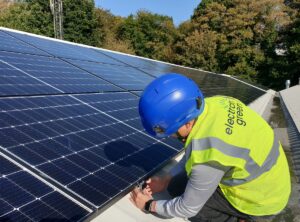More money? More exposure to air pollution in China
In a reversal of European and North American trends, in the world’s most populated country higher socioeconomic status puts people at greater risk from poor air quality.
With more deprived areas often found closer to significant air pollution sources in the Western Hemisphere, it may be surprising to learn that a team at the University of Washington, U.S., believe the opposite is true for people living in China. There, wealthier citizens have an increased chance of being exposed to dangerous levels of outdoor air pollution.
Published on 8th June in the journal Environmental Health Perspectives, the research is one of just a handful of studies on air pollution variations within a country. Previous projects have looked specifically at high income nations in the West. Now, these new findings show that nitrogen dioxide (NO2) and fine particulate matter (PM2.5) – both of which are widely tracked and known to have significant health risks – are present in higher concentrations in Chinese areas known to be home to higher socioeconomic status populations. Further to this, higher wealth areas inhabited by the majority ethnic group were more susceptible compared to neighbourhoods housing minority groups.
The team believe this is down to the fact each country in the world has a unique DNA of economic, urbanisation, and industrial characteristics. In China, where rural-urban migration has been significant in the last few decades, many people moving into cities do so for jobs within manufacturing. Accounting for more than 26% of GDP, these jobs are traditionally higher paid, and people are inclined to live close to work. However, the nature of the sector – including production processes, product distribution and export – means businesses and associated infrastructure are often high polluting.
This contrasts the situation in the U.S. and U.K., where lower socioeconomic status communities – frequently populated by minority groups – are often politically and financially incapable of effectively campaigning and tackling sources of air pollution. ‘Environmental disparities reflect a location’s history, culture, economics and power dynamics,’ said co-author Julian Marshall, University of Washington professor of civil and environmental engineering. ‘Those factors differ between the U.S. and China, so we see different patterns in environmental inequalities.’
‘The patterns in China reflect that China’s economic development is positively related with both socioeconomic status and air pollution,’ added lead author Yuzhou Wang, a doctoral student in the civil and environmental engineering department at the University of Washington. ‘However, with further urbanisation and economic reforms in China, the positive relationship between socioeconomic status and air pollution exposure may weaken or shift in the future.’
Image credit: Li Yang

















